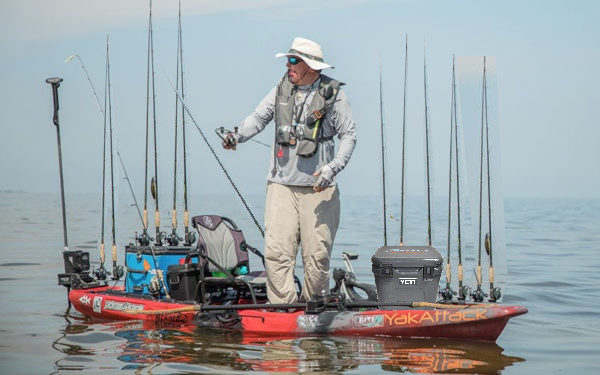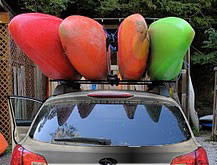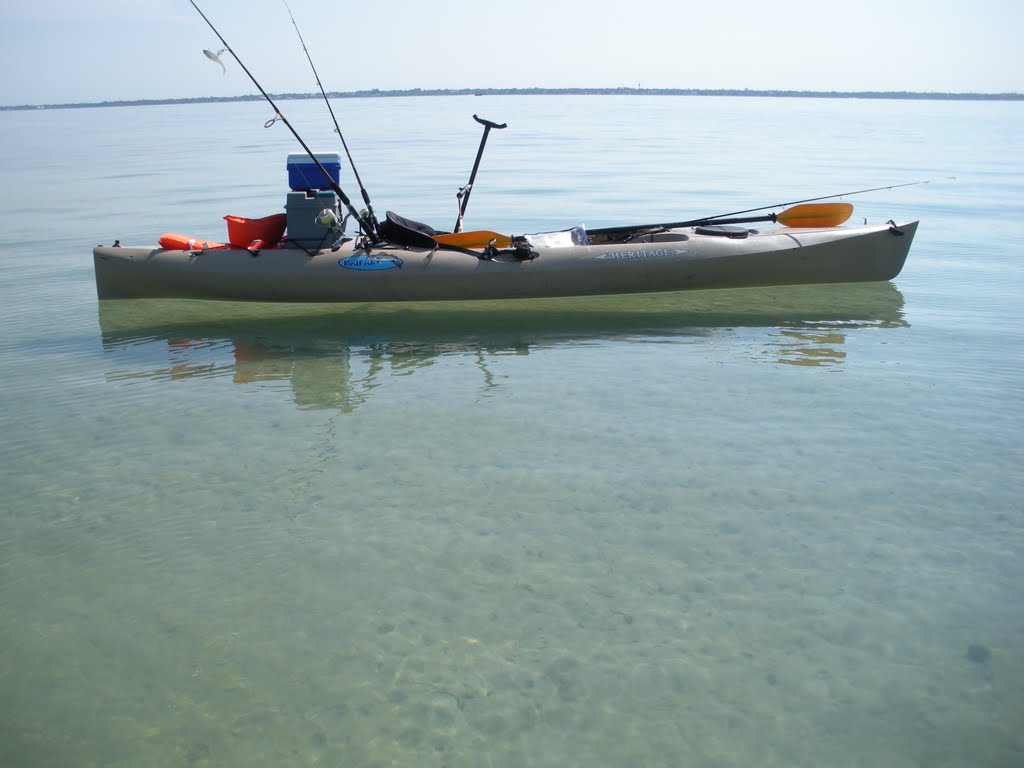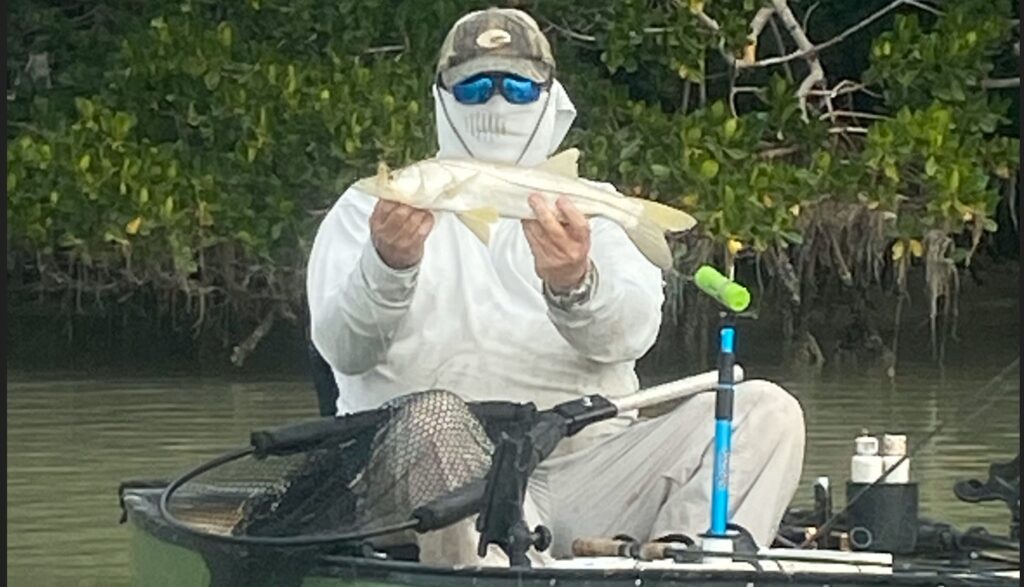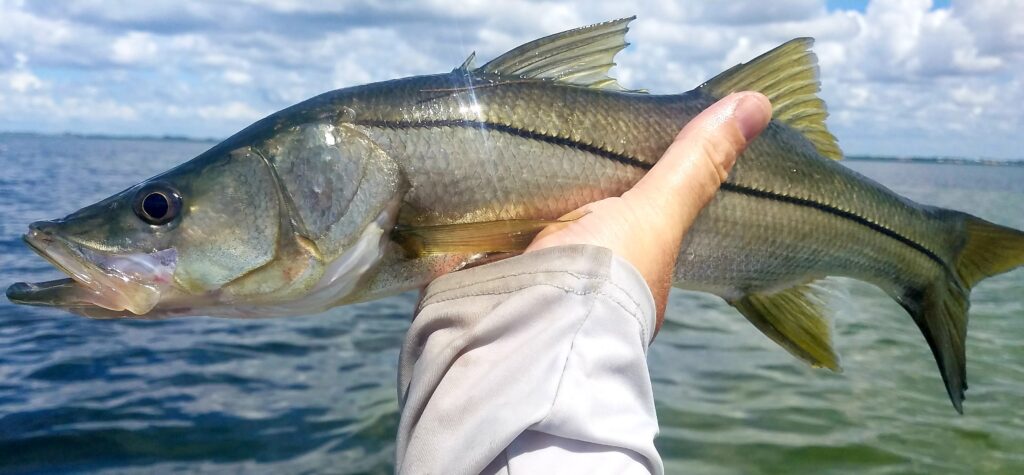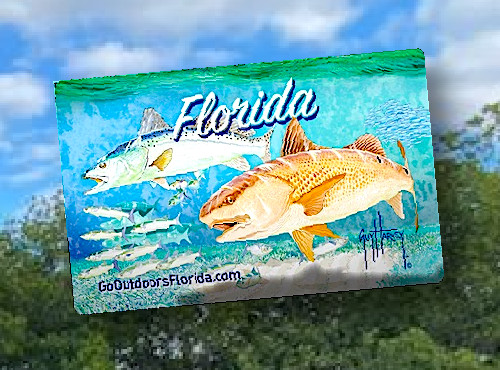Introduction
Ever wondered what makes redfish one of the most sought-after species for anglers in the Sunshine State? With their striking colors, challenging fight, and delicious taste, redfish have captivated the hearts of fishing enthusiasts for generations. Whether you’re a seasoned angler or someone who’s just getting started, this comprehensive guide on redfish fishing in Florida will arm you with all the knowledge you need to reel in the big one!
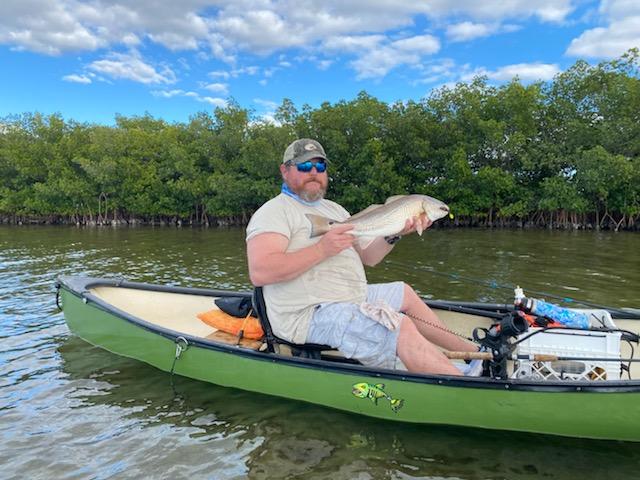
In this ultimate guide, you’ll learn essential techniques on how to catch redfish, discover prime spots for fishing for redfish in Florida, and even gain insights into the legal and ethical aspects of fishing inshore. From the gear you’ll need to insider tips from seasoned anglers, we’ve got you covered.
So, grab your fishing gear and get ready for an in-depth exploration of the thrilling world of Florida redfish!
Certainly! Part 1 delves into understanding Florida redfish, exploring their biology, behavior, and the reasons they’re highly prized by anglers. I’ll incorporate your keywords for SEO optimization.
Part 1: Understanding Florida Redfish
1.1 Biology and Behavior of Florida Redfish
Redfish, also known as red drum, are a saltwater species belonging to the Sciaenidae family. They are primarily found in inshore waters and are easily recognizable by the eye-catching dark spot near their tail. Understanding the biology of redfish can significantly improve your redfish fishing game. These fish are often found in shallow water habitats such as estuaries, marshes, and lagoons—prime spots for fishing inshore.
Adult redfish prefer to roam the bottom, feeding on a variety of prey like crustaceans and smaller fish. Knowing what they eat can help you make informed choices when selecting your bait for catching redfish.
1.2 The Appeal: Why Anglers Love Fishing for Reds
There’s a unique thrill in fishing for reds that you won’t find with other saltwater species. Firstly, redfish are known for their challenging fight—a characteristic that adds an element of excitement to redfish fishing. They are often found in shallow water with their heads down and tails up (tailing) waving like flags just daring you to try and catch them. However they are a skittish fish with sensitive lateral lines that sound the alarm of danger by the slightest vibration. Tricking a redfish to eat is a badge of honor for any angler.
Secondly, redfish are accessible in various parts of Florida, making it easy for anglers to find a nearby spot for fishing for redfish in Florida. Whether you’re a fan of fly fishing for redfish or prefer the traditional approach, there’s a technique suited to your preference.
Redfish are said to have “big shoulders” as they tank through the water during the fight bending your rod to a point where your skill will be tested. Catching a redfish is like reeling in a submarine.
1.3 Seasonal Patterns in Redfish Fishing
Timing is everything when it comes to fishing, and understanding the seasonal patterns is vital for anyone interested in how to catch redfish. In Florida, redfish are active all year round, but they are especially abundant during the late summer and fall months. This is when they move into the inshore waters for spawning, providing excellent opportunities for catching redfish.
In the colder months, redfish tend to move to deeper waters, but they are still catchable if you know where to look. Fly fishing for redfish becomes particularly rewarding during this time as they are less skittish and more focused on feeding.
Part 2: Essential Gear for Inshore Fishing
2.1 Rods, Reels, and Line: The Basics for Catching Redfish
When it comes to catching redfish, the right gear can make all the difference. For rod selection, a medium to heavy action rod around 7 to 8 feet in length is often recommended for inshore fishing. This provides the necessary backbone for fighting redfish without compromising on sensitivity.
As for reels, a spinning or baitcasting reel with a solid drag system is ideal for redfish fishing. When spooling your reel, braided line between 15 to 30 pounds is often recommended to withstand the redfish’s notorious pull.
A 7-7.5ft medium-heavy fast action rod paired with a 3000 sized reel spooled with 10lb powerpro line and a 20lb mono leader is a highly effective setup for most redfish situations on the open flats and mangrove edges. For around structure or where their are populations of large fish increasing your line to 20lb with 30lb leader might be warranted. However, redfish are skittish and bigger lines can spook a cautious red. So with a good drag and some skill the lighter inshore setup can be deadly.–yakfishin365
2.2 Best Bait and Lures to Catch Redfish
If you’re wondering how to catch redfish effectively, choosing the right bait is crucial. Live baits like shrimp, mullet, and pinfish are generally effective for fishing for redfish in Florida. For artificial lures, spoons, jigs, and soft plastics mimicking native prey can also produce excellent results. Fly fishing for redfish? Then crab and shrimp patterns are your go-to flies.
Part 3: Techniques for Catching Redfish
3.1 How to Catch Redfish: Bottom Fishing
One of the most traditional methods for redfish fishing is bottom fishing. Here’s how to catch redfish using this technique:
- Location: Choose an area where redfish are known to congregate, such as oyster beds or grass flats.
- Bait: Use live or cut bait like shrimp, mullet, or pinfish.
- Rig: A basic Carolina rig works well for bottom fishing.
- Cast: Cast your bait near structure where redfish are likely to be hiding.
- Wait: Allow the bait to rest on the bottom, keeping a tight line for better sensitivity.
- Set the Hook: When you feel a nibble, wait a second, and then set the hook with a firm upward jerk.
3.2 Casting and Retrieving for Redfish
If you’re looking for more active engagement, casting and retrieving can be an effective method for fishing for reds.
- Lure Selection: Choose lures that mimic natural prey, such as soft plastics or spoons.
- Cast: Cast past your target area, so you don’t spook the fish.
- Retrieve: Reel in at a steady pace, occasionally twitching your rod tip for a more realistic action.
- Strike: When you feel a hit, set the hook with a sharp, quick motion.
3.3 Fly Fishing for Redfish
Fly fishing for redfish has gained significant popularity, especially in the shallow waters of Florida.
- Gear: Opt for a 7-9 weight fly rod and a saltwater-resistant reel.
- Fly Selection: Crab and shrimp patterns work well for redfish.
- Casting: Use a sidearm cast to keep the fly line low, minimizing spooking fish.
- Retrieve: Use a “strip and pause” method for a lifelike motion.
- Hooking: A strip-set is generally more effective than lifting the rod tip when fly fishing for redfish.
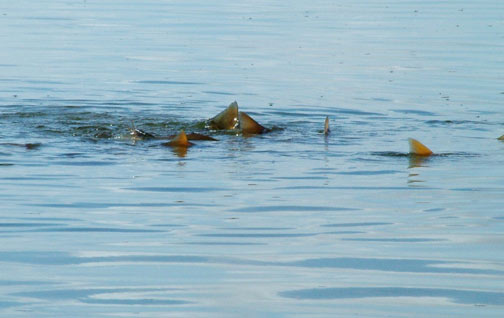
3.4 Sight Fishing: The Ultimate Skill in Saltwater Inshore Fishing
Sight fishing adds an exciting visual element to catching redfish. It requires keen eyes and a stealthy approach.
- Spotting: Look for dark shapes or tails breaking the water’s surface.
- Stealth: Approach cautiously to avoid startling the fish.
- Cast: Aim to place your bait or lure just in front of the fish.
- Retrieve: Use a slow, natural retrieve to entice the fish.
- Set: When the fish takes the bait, set the hook firmly but not too aggressively.
Part 4: Unveiling Florida’s Best Redfish Fishing Spots
4.1 Tampa Bay: An Angler’s Playground
Tampa Bay is not just a bustling metropolis; it’s a goldmine for redfish enthusiasts. The grass flats and mangrove-lined shorelines are teeming with redfish of all sizes. This makes it a versatile spot, suitable for both novices and expert anglers. From Weedon Island to Cockroach Bay, Tampa Bay offers a variety of inshore fishing opportunities where catching redfish is almost guaranteed.
4.2 Sarasota: The Inshore Oasis
Sarasota Bay and its numerous grass flats and oyster bars are another hotspot for redfish. The region is renowned for its clear, shallow waters which are ideal for sight fishing. Techniques like fly fishing for redfish have gained substantial popularity here due to these optimal conditions.
4.3 Mosquito Lagoon: The Redfish Capital
Located on the East Coast, Mosquito Lagoon is often referred to as the “Redfish Capital of the World.” This is mainly because of the year-round availability of large, mature redfish. The shallow waters and seagrass beds provide excellent cover for these elusive fish, making it a prime location for anglers who are keen on mastering how to catch redfish.
4.4 Indian River: The Versatile Estuary
Indian River Lagoon offers a mix of salt and freshwater fishing. However, the estuary is most famous for its redfish, which are generally found near the mangroves and docks. The area is also known for its trophy-sized redfish, especially during the spawning season.
4.5 Florida Keys: The Tropical Paradise
From Key Largo to Key West, the Keys offer unique fishing experiences. Here, you can expect to catch redfish amid the scenic beauty of crystal-clear waters and coral reefs. The shallower flats are ideal for sight fishing, and the abundance of natural prey makes it easier for anglers using artificial lures and flies.
Part 5: Legal and Ethical Guidelines for Redfish Fishing in Florida
5.1 Understanding Florida’s Fishing Licenses
Before you can legally fish for redfish in Florida, it’s imperative to secure the appropriate saltwater fishing license. There are multiple types of licenses, including resident, non-resident, and even lifetime licenses for those committed to the long haul. Obtaining a license isn’t just a legal formality; your contributions help fund the Florida Fish and Wildlife Conservation Commission’s (FWC) ongoing conservation efforts. Licenses can usually be purchased online, through approved vendors, or at local FWC offices.
5.2 Complying with Size and Bag Limits
Florida imposes specific size and bag limits on redfish to promote sustainable fishing. As of my last update in January 2022, the standard slot limit for redfish is 18 to 27 inches total length, and the bag limit is one fish per person per day. These limits can change, so it’s crucial to consult the latest FWC guidelines regularly. Abiding by these regulations ensures the redfish population remains healthy for future generations of anglers.
5.3 The Importance of Catch and Release
While catching a trophy redfish can be exhilarating, it’s essential to consider the ethical aspect of fishing. Catch and release is highly recommended for redfish that are below or above the slot limits. This practice is crucial for conservation and sustaining a healthy population. When releasing a redfish, handle it as little as possible and use tools like a dehooker to minimize stress on the fish.
Nothing better than a great photo of your redfish. However, you don’t need a picture of EVERY fish you catch. Scientists have proven the longer a fish is out of water the less likely they are to survive. Redfish are hard fighters and will exhaust themselves before giving in so taking them out of the water immediately is like going for a five mile run and then trying to hold your breath. Let them catch their breath soaking in a net while you get the photo set up. Then quickly pose with them making sure not to injure their gills or organs. Support their head and tail, quickly take your photo and return them to the water as fast as you can.
-Yakfishin365
5.4 Ethical Angling: Leave No Trace
When you’re out in the water, practicing “Leave No Trace” ethics can make a big difference. This includes packing out what you pack in and being mindful of the aquatic environment. Avoid anchoring on seagrass beds or disrupting local habitats. These small considerations go a long way in preserving Florida’s beautiful inshore fishing locations for years to come.
Part 6: Insider Tips for Redfish Fishing in Florida
6.1 Best Time to Fish: The Solunar Theory
Many seasoned anglers swear by the Solunar Theory, which posits that fishing is more fruitful during specific moon phases and tidal movements. According to this theory, the best times to fish are during a new or full moon. During these phases, higher tidal fluctuations often mean more active redfish, which can increase your chances of catching them.
6.2 The “Walk the Dog” Technique
While conventional wisdom suggests using live bait for redfish, artificial lures can also be highly effective when used correctly. One popular technique with artificial lures is “walk the dog,” where you twitch your rod tip to make the lure zigzag on the water’s surface. This mimics an injured baitfish, often triggering aggressive strikes from redfish.
6.3 Using Cut Bait in Murky Water
While live bait is popular in clear waters, using cut bait like mullet or pinfish can be incredibly effective in murky or stained waters. The scent disperses more widely, attracting redfish from a distance. This is especially useful during the summer months when afternoon rains can muddy the water.
6.4 Utilizing Underwater Structure
Redfish love to hide near underwater structures like oyster beds, fallen trees, and docks. Employing a jigging technique near these structures can be a game-changer. However, be prepared to lose a few hooks and lures in the process—it’s often a small price to pay for a hefty catch.
6.5 Kayak Fishing for Stealth
Sometimes the most significant factor in successful redfish fishing is not spooking them. Kayaks offer a quiet approach, allowing you to get close to schools without alarming them. In the shallow flats of Florida, where water depth can be less than a foot, a kayak’s stealth can be a huge advantage.
6.6 The Sight Fishing Advantage
For anglers who like to see their prey before casting, polarized sunglasses are a must. They reduce glare from the water’s surface, making it easier to spot redfish. Combine this with high vantage points like poling platforms or casting platforms on your boat, and sight fishing can become an incredibly effective strategy.
6.7 Redfish Behavior and Patterns
Understanding the behavior of redfish can give you a significant edge. For example, redfish are known to forage near mangroves during high tide and retreat to deeper channels during low tide. By planning your fishing trip around these patterns, you can optimize your chances of a successful catch.
Using two rods can increase your chances of finding redfish. Use cut-bait on one rod and soak it along an oyster bar or mangrove shoreline. Try to find a spot near a drop off where the redfish will move to and from during the tide changes. Use your second rod to power fish with a jighead and paddle tail by fan casting the area. Once you have covered all 360 degrees of an area slide down to new water and repeat. Depending on how the redfish are acting one method is going to work better than the other. Once you hook up you can dial things in and figure out exactly what they are up to.
–Yakfishin365
Conclusion: Redfish Fishing in Florida
And there you have it—a quick guide to mastering the art of redfish fishing in Florida! From understanding the redfish’s natural habitats and fishing seasons, uncovering Florida’s redfish hotspots, to adhering to ethical guidelines and leveraging insider tips—this guide aims to provide you with everything you need for a successful outing.
Whether you’re a beginner dipping your toes into the world of inshore fishing or a seasoned angler looking to hone your skills, Florida offers a plethora of opportunities for catching redfish. With its diverse inshore environments, from the clear flats of Sarasota to the rich estuaries of Mosquito Lagoon, Florida is truly a redfish angler’s paradise.
Remember, while skill and knowledge are crucial, fishing is as much about the experience as it is about the catch. Take the time to absorb your surroundings, respect the environment, and, most importantly, enjoy the thrill of the chase.
Feel like we missed a tip or have a redfish fishing story to share? Drop a comment below—we’d love to hear from you! And if you found this guide helpful, be sure to share it with your fellow anglers and consider subscribing for more in-depth articles on outdoor adventures.
Happy fishing!
Frequently Asked Questions (FAQs) on Redfish Fishing in Florida
Q1: What is the best time of year for redfish fishing in Florida?
A1: While redfish are available year-round in Florida, the peak season is generally considered to be late summer through early fall. During these months, redfish are more active and often found in schools, making it easier to catch them.
Q2: Do I need a special license to fish for redfish in Florida?
A2: Yes, you will need a Florida saltwater fishing license to legally fish for redfish in Florida waters. You can obtain this license online or through various approved vendors.
Q3: What are the current size and bag limits for redfish?
A3: As of the latest update in 2022, the standard slot limit for redfish is 18 to 27 inches total length, and the bag limit is one fish per person per day. Always check the Florida Fish and Wildlife Conservation Commission’s (FWC) website for the most current regulations.
Q4: Can I use artificial lures for redfish fishing?
A4: Absolutely, artificial lures like soft plastics, spoons, and topwater lures can be very effective for catching redfish, especially when using techniques like “walk the dog.”
Q5: What are the best locations for redfish fishing in Florida?
A5: Some of the best locations include Tampa Bay, Sarasota Bay, Mosquito Lagoon, Indian River, and the Florida Keys. Each of these spots offers unique advantages and challenges for redfish fishing.
Q6: Is catch and release encouraged for redfish?
A6: Yes, catch and release is highly recommended, especially for fish that are below or above the slot limits. It’s crucial for maintaining a healthy redfish population and promoting conservation.
Q7: Are kayaks a good option for redfish fishing?
A7: Kayaks offer a stealthy and effective approach to fishing in shallow flats where redfish are commonly found. They allow you to navigate quietly, avoiding spooking the fish.
Q8: Any insider tips for catching big redfish?
A8: Utilize the Solunar Theory to fish during optimal moon phases, employ the “walk the dog” technique with artificial lures, and target underwater structures like oyster beds and fallen trees for the best chances at catching a trophy redfish.
Sciaenops ocellatus, commonly known as the Red Drum or Redfish
For current rules and regulations check out Florida Fish and Wildlife Conservation Commission

